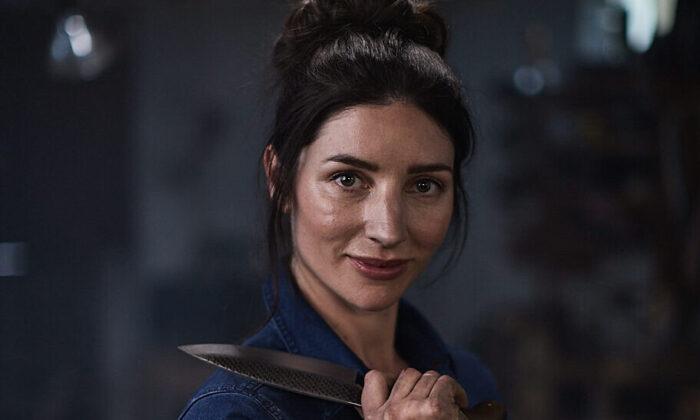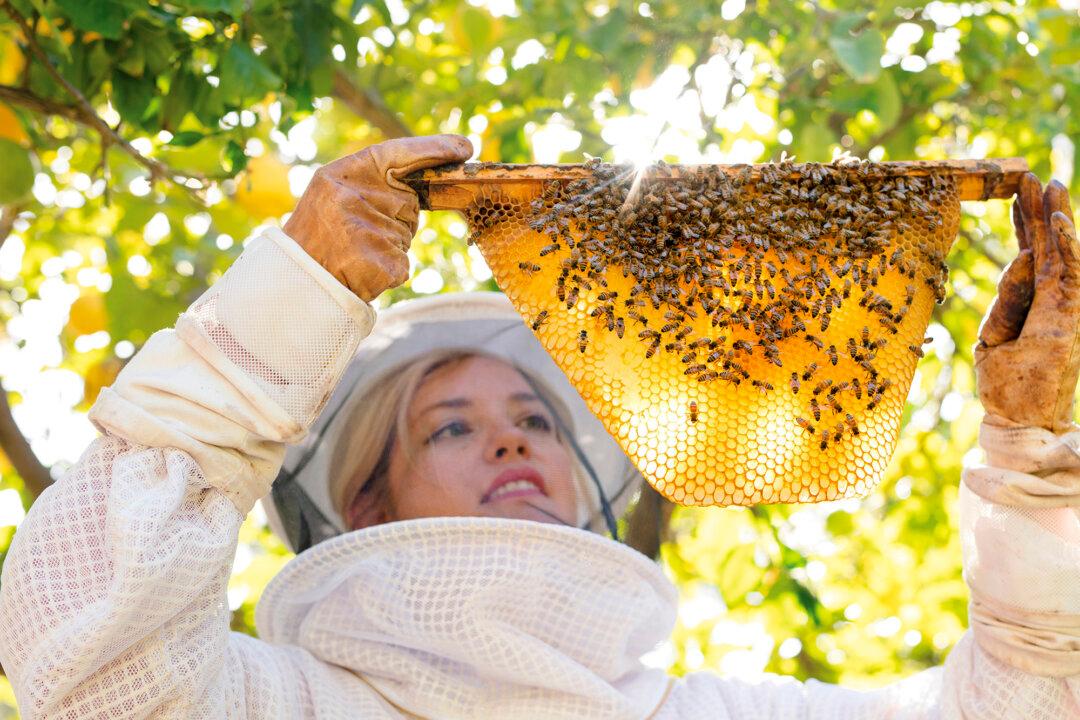In deep rural Vermont, there’s a handbuilt post-and-beam house made of boards chiseled by hand from logs hauled out of the woods by a man and a horse. Attached to the house is a carpenter’s workshop and a blacksmith’s shop.
It was in these workshops that, as a child, Chelsea Miller watched her father do his carpentry and blacksmithing. She held his tools for him, and he taught her to make simple wooden spoons and metal hooks. He shod the horses there, and she breathed in the smell of them and watched him use the farrier’s rasps to file their hooves.
It was to these workshops that she returned in her 20s, frustrated with an acting career in New York. It was here that she came to rediscover working with her hands and to spend time with her father when he became ill. It was here that she became her father’s final apprentice, here that he taught her everything he knew, here that he gave her his last and best gift. And here she stood in her grief and her newfound love of craftsmanship, realizing that the workshops were now hers to use, hers to experiment with, and hers to build a career from.

Now, Miller forges beautiful bespoke, handmade knives out of discarded farrier’s rasps, coveted by chefs and home connoisseurs alike. She hand-carves their handles from the large collection of maple, cherry, walnut, and apple woods her father sourced and stored at their family farm.
Her knives have at least a six-month wait period, due to the time it takes to source the materials, make the knife, and test the product before shipping. Despite never advertising, she has been featured in multiple publications, and her success has been unbounded. How did she go from experimenting in her father’s workshops to being such a highly sought-after artisan?

Gifts Forged With ‘Heart and Hands’
Miller’s parents were both from suburbia but wanted nothing more than to move to the country and build a farm. Her father apprenticed with a post-and-beam carpenter, and began, with the help of a horse, to haul logs and plane boards for their house.“The main premise for the way we lived was to be resourceful and use what was on the land,” Miller said. They grew their own food, and her father kept bees and tapped maple trees to make syrup. Miller was homeschooled by her mother and formed a deep connection to the land.
After he built the house, her father became interested in blacksmithing. “He shod all the horses himself,” Miller said, “and he always had a lot of those farrier’s rasps lying around.” Miller loved the rasps, the way they looked, and how they smelled of the horses.
When she began learning metalwork, her father encouraged her to use the old rasps as practice materials—“but I always remembered just how beautiful those rasps looked,” Miller said. “We didn’t have many things. I was always attracted to a thing that seemed more beautiful than it needed to be.”
Miller made her first knives at the end of 2011, while her father was still alive.
“He had recently come home from the hospital, and he and I spent many hours in the shop together. We were both experimenting, in a way—he in his newly reduced condition and me in my somewhat lost state. He died in 2017.”

She lovingly gave away her early knives as gifts to her friends.
“They were overwhelmingly positive,” Miller said. “They encouraged me to make more and try to sell them. So I decided to take out a booth at the Brooklyn Flea.”
In the summers of 2012 and 2013, the Brooklyn Flea was held in a large outdoor space and was teeming with chefs and writers on the lookout for new artisans.
“The response was so encouraging,” Miller said, “and it provided me with the funds to rent the back studio of a motorcycle shop in Brooklyn—a dangerous little corner—and I made more knives and sold out every weekend.”
It was when The New York Times did a feature on her knives that her business really changed. Miller remembers the photographer saying to her, “Don’t tell anyone I said this, but you need to double your prices immediately,” she said. Miller took his advice, and “it gave me a lot of freedom.”
She quickly learned to educate her customers: “I might not be making knives forever, and if you want one, they are in limited supply.”
She said: “To respect yourself as an artist, you have to be changing and growing. Whatever comes from the artist’s hand at the time makes it so special. It relies on your own heart and hands to create.”

The Story of a Knife
Miller now lives and makes her knives in Connecticut, where “there are a lot of horse farms, so there are a lot of farriers. You find rasps at flea markets. They have come to the end of their lives for the farriers.” So Miller loves to give them a new life: “I’m in the middle. I’ve taken this tool that already had a story, and then when I am finished, there’s a new story beginning.” Farrier’s rasps are made of high-carbon steel, so Miller’s knives are very easy to sharpen, and they can last for generations.All of the wood for the knife handles still comes from the store her dad sourced before he died.
“I don’t think I’ll ever run out of wood he cut at the farm,” Miller said, laughing.

For her chef’s knives, she preserves the raised, triangular, crosshatched teeth on the farrier’s rasp as a grater on one side of the blade.
“It’s not necessary,” she said, “but I love being able to connect the material to its previous life as a file. It’s a hand-holding between the past and the present.”
To preserve that texture, she has to cut and grind the knives, rather than forging them. She uses a plasma cutter to rough out the shape, and then spends hours grinding them down on the bench grinder.
“On the grinding stone, you do have to create a lot of resistance, you have to push very hard. But I’m just letting the machines do the work. I am not able to manipulate any of the metal myself,” she said.

Her dinner and cheese knives are forged, with the materials first heated in her propane-operated forge, then hammered out on an anvil.
“There is so much bounce—it’s actually coming up to meet you every time you let it fall,” she said. “You have to lift the hammer with a lot of strength and then let the weight and the momentum of the hammer do the work for you.”

Then comes the finer sanding, which takes place on a belt sander, and “I use a heat-treat oven to restore their hardness after all the grinding.” She cuts the wood with a bandsaw and uses food-grade epoxy to attach the handles with brass pins.
It is very physical work.
An Artist’s Legacy
At the core of Miller’s work is the aim to make something more beautiful than it needs to be.“Growing up in an atmosphere where being resourceful was valued most, anything extra was so exciting to me,” she said. “I think that’s why I loved storytelling and acting—something magical.” Of her knifemaking, she says, “It’s something I have to do.”
Asked what makes her knives beautiful, she points to their shape, “the sloping handles and the long gentle lines. ... I’ve always felt there’s a lack in the design of knives. I really love fluid lines, very feminine lines,” she said.

Miller believes handmade knives are so special because they have a real connection to the maker: “You’ve stopped for a moment in time in someone’s process. They wouldn’t be able to recreate it. That’s so perfect.”
As an artist, “I’m a lot like my dad,” Miller said. “I keep feeling like I want to learn more.” Recently, she discovered some knives that her dad was making before he died, but “he had ground them too hard and I thought he had ruined them. But I looked at them the other day and I thought, actually, I could turn these into other uniquely shaped knives. I was so excited; I spent the rest of the day working with these pieces that I’d thought were garbage and now turned out to be really special.”





